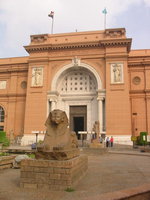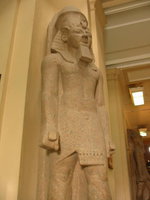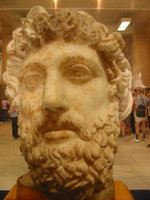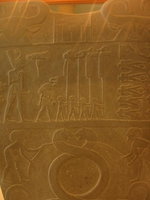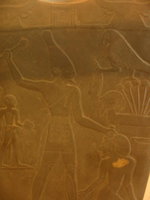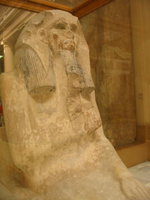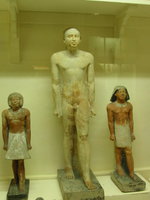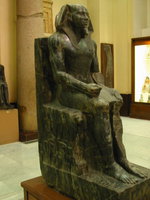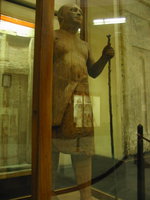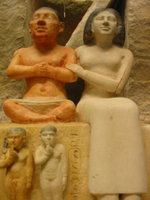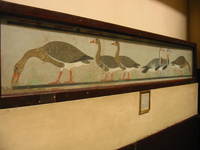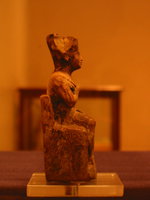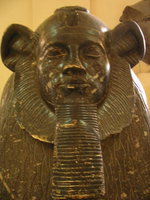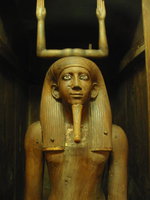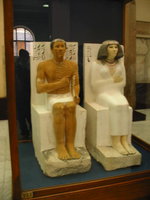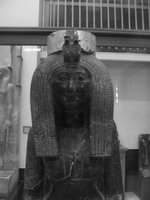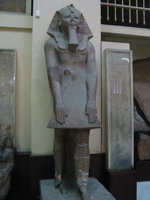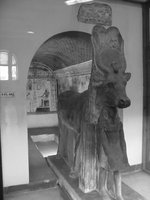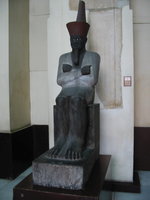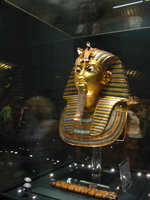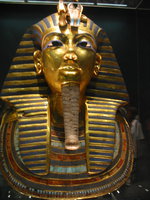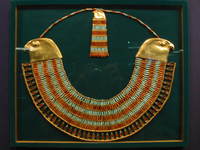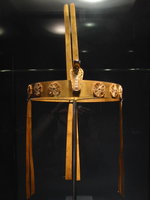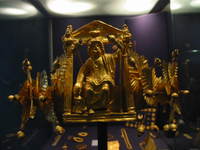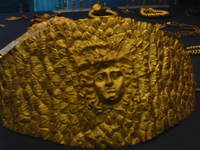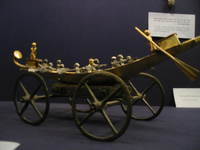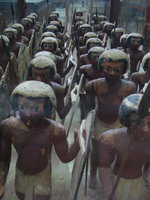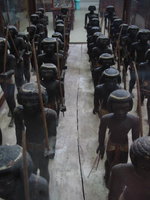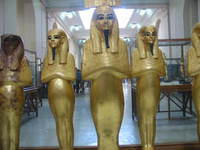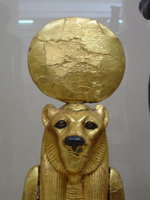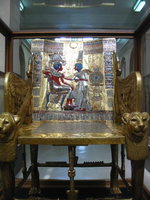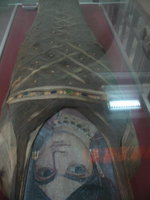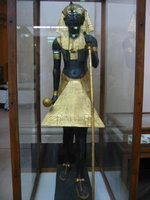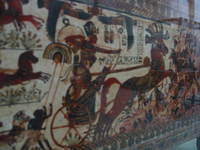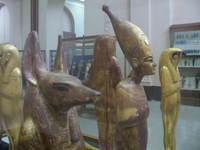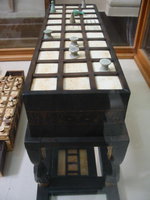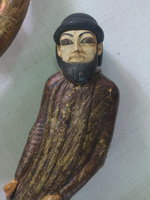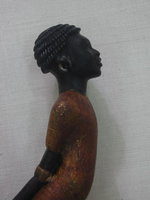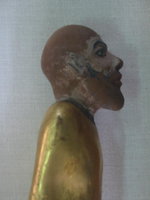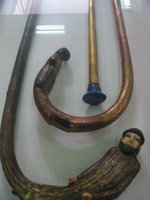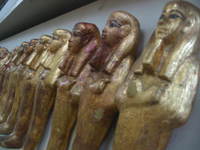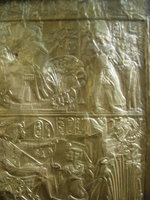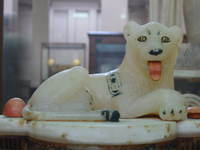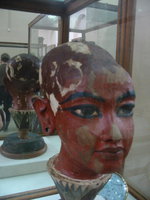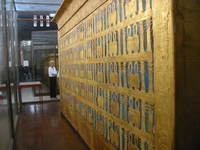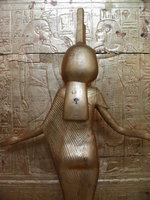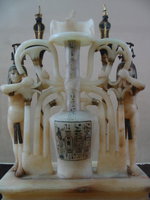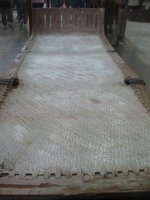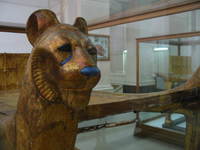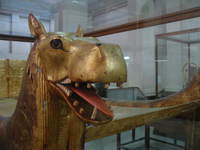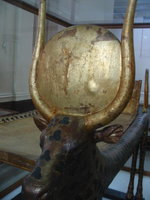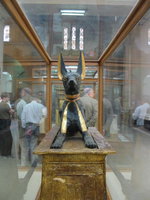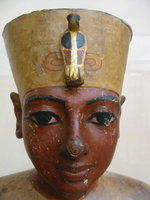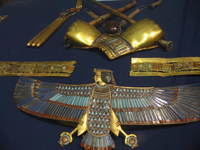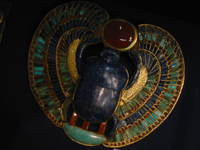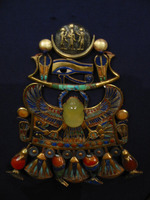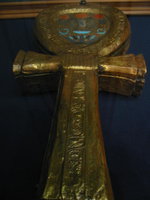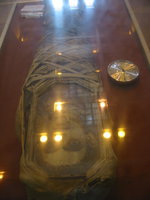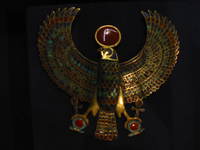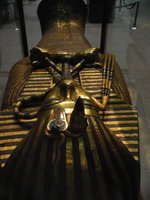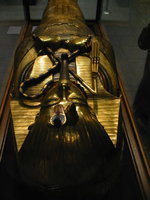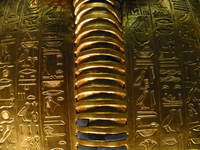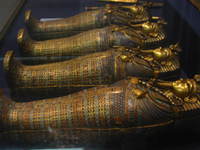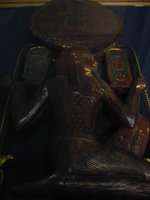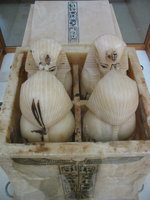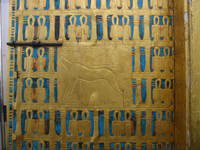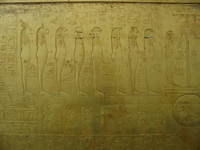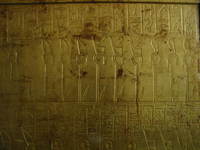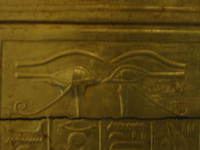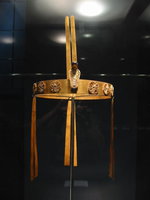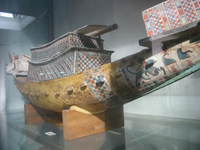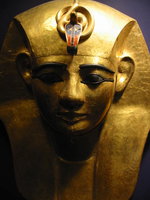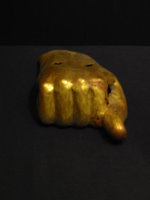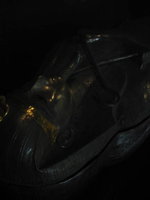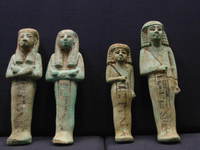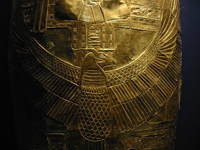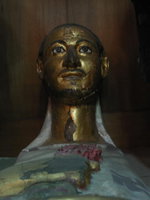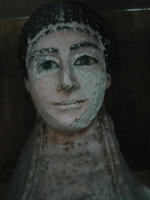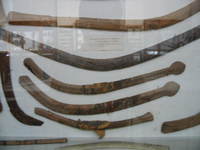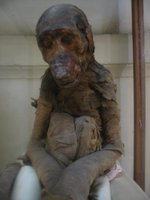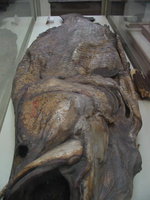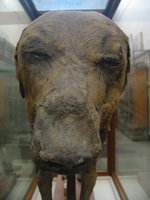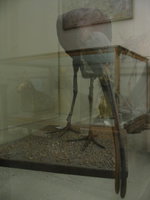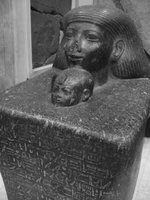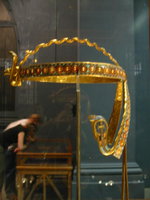day 48 egyptian museum
It's hard to say which Pharaoh this is. They all looked the same to me. That is because the Egyptian art is immortal -- in other words: conservative. From the old kingdom to the new kingdom, the art style were almost idential. No wonder Egyptians didn't have any word for art.
Everything in the Egypt reamin the same for a long time. You dump a corpse in the desert, a hundred years later, you can still tell the face of the corpse. No wonder ancient Egyptians consider imoortallity such a big deal. They werelike the Chinese in the way that they hated changes. They prefered isolation.
Egypt was bounded by the deserts on the west and the east. The south (beyond Aswan) was bounded by some large boulders. The north was bounded by the sea which the Egyptians never liked. For they were river sailors and not very good at crossing the sea.
This palette is about 64 cm in height. It's probably a ceremonial palette. Not something a woman use for her makeup.
The palette was found in Hierakonpolis, somewhere in southern Egypt.
Namer was the first known Pharoah of Egypt. He united Upper and Lower Egypt. (the upper Egypt was in the south and the Lower Egypt was in the north, the upper and lower refered to the upper and lower Nile, not the north and south of modern maps).
Hathor (cow head god) is on the top. The Pharaoh follows the sandal boy, and some flag holders. The headless bodies were the enemies. The felines with elongated neck meant something I forgot.
Tutankhamun was the son of Akhenaten.
Akhenaten was the famous Heretic Pharaoh who tried to force the Egyptians to monotheistically worship the Aten. It was the first recorded attempt to monotheism in the world.
It was a big deal in Egypt. Egyptian religion had never been changed since the time of Namer and now Akhenaten wanted to turn it upside down. Certinaly it upset the preiests who were incredibly rich. And it upset the Army because Akhenaten was kind of a Pacifist. And he also moved the capital to Amarna.
As you can see, Akhenaten wasn't very liked by the Egyptians in power, especially the priests and the army. He was probably surrounded by enemies.
When King Tut was eight, his farther died. He was just a boy. In order to keep the throne, he married his half-sister Ankhesenamun. (In Egyptian culture, only the man who married the pure blood daughter of the Egyptian royal could become the Pharaoh.)
So here you go, a boy of eight years old married to a girl of thirteen years old who was also his half sister. The two kids must be very scared (since their father was not very liked by the priests and the generals).
They moved the capital back the Thebes. King Tut, by his own will or perhaps the will instilled by his guardians, tried to move back to the old Egyptian way.
At the age of 18th (or 17th), he died. Some said he died in an accident. Some said he was murdered by Ay, the chief priest. I think murdered by Priest Ay is a more senstational story.
Priest Ay became the next Pharaoh. He and his successor erased King Tut from all official records. He also married Ankhesenamun (in order to rule Egypt, you ought to marry the pure blood daughter of a Pharaoh). So now we have a 70 years old marrying a 23 years old. Ankhesenamun wasn't very happy about the marriage. Before the wedding, she wrote a letter to the Hittie King (the Hittie was Egypt's enemy), asking him to send a prince to marry her. The prince was assassined at the border. Eventaully she married the dirty old man and disappeared completely from the historical record.
King Tut was a relatively minor king. He was so famous nowadays only because his tomb was discovered in the modern age (around 1920's)
The pharaoh is killing his enemy. Horus (the falcon) is protecting him. He sandal boy is standing behind him.

